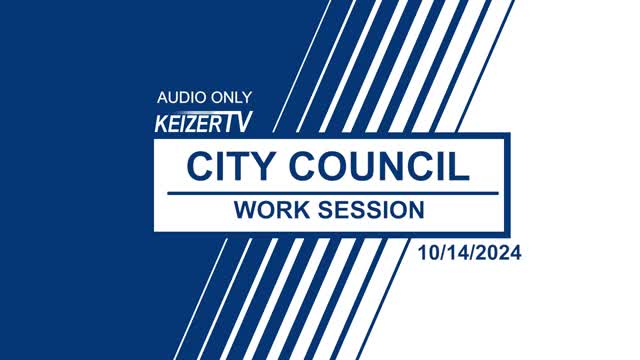Kaiser explores options for separating urban growth boundary from Salem
March 30, 2025 | Keizer, Marion County, Oregon
This article was created by AI summarizing key points discussed. AI makes mistakes, so for full details and context, please refer to the video of the full meeting. Please report any errors so we can fix them. Report an error »

During the recent City Council Work Session held on March 30, 2025, in Keizer, Oregon, council members engaged in a detailed discussion about urban growth boundaries (UGB) and the implications of state regulations on local planning. The meeting highlighted the complexities of managing population growth and land use in the region, particularly in light of new state mandates.
A significant portion of the discussion centered around the Oregon Housing Needs Analysis (ONA), which has introduced new requirements for cities regarding housing production. The ONA suggests that Keizer will need to produce approximately 3,000 housing units over the next 20 years, a substantial increase from the 2,067 units projected in the city's previous housing needs analysis. This discrepancy raises concerns about the adequacy of land and resources to meet these new demands.
Council members expressed frustration over the evolving nature of state regulations, which often complicate local planning efforts. The requirement to use population estimates from Portland State University, rather than local data, was noted as a challenge that limits the city's ability to tailor its growth strategies effectively. The council acknowledged that these population projections are inherently uncertain and subject to change, complicating long-term planning.
Another key topic was the potential separation of Keizer's UGB from Salem's. While this could provide Keizer with more control over its land use and development, it would also require a significant commitment to demonstrate a 20-year land supply and could lead to a lengthy and costly process. Council members reflected on the experiences of other cities, such as North Plains, which faced similar challenges when attempting to navigate UGB changes.
The meeting underscored the importance of collaboration among local governing bodies and the need for legislative support to facilitate any potential changes to the UGB. As the council prepares for upcoming housing capacity analyses and continues to monitor state regulations, the discussions highlighted the ongoing challenges of balancing growth with community needs and resources.
In conclusion, the City Council's work session revealed critical insights into the complexities of urban planning in Keizer. With significant changes on the horizon, the council's proactive approach will be essential in addressing the community's housing needs while navigating the intricate landscape of state regulations. The council plans to continue exploring options for managing growth effectively, ensuring that Keizer remains a vibrant and sustainable community.
A significant portion of the discussion centered around the Oregon Housing Needs Analysis (ONA), which has introduced new requirements for cities regarding housing production. The ONA suggests that Keizer will need to produce approximately 3,000 housing units over the next 20 years, a substantial increase from the 2,067 units projected in the city's previous housing needs analysis. This discrepancy raises concerns about the adequacy of land and resources to meet these new demands.
Council members expressed frustration over the evolving nature of state regulations, which often complicate local planning efforts. The requirement to use population estimates from Portland State University, rather than local data, was noted as a challenge that limits the city's ability to tailor its growth strategies effectively. The council acknowledged that these population projections are inherently uncertain and subject to change, complicating long-term planning.
Another key topic was the potential separation of Keizer's UGB from Salem's. While this could provide Keizer with more control over its land use and development, it would also require a significant commitment to demonstrate a 20-year land supply and could lead to a lengthy and costly process. Council members reflected on the experiences of other cities, such as North Plains, which faced similar challenges when attempting to navigate UGB changes.
The meeting underscored the importance of collaboration among local governing bodies and the need for legislative support to facilitate any potential changes to the UGB. As the council prepares for upcoming housing capacity analyses and continues to monitor state regulations, the discussions highlighted the ongoing challenges of balancing growth with community needs and resources.
In conclusion, the City Council's work session revealed critical insights into the complexities of urban planning in Keizer. With significant changes on the horizon, the council's proactive approach will be essential in addressing the community's housing needs while navigating the intricate landscape of state regulations. The council plans to continue exploring options for managing growth effectively, ensuring that Keizer remains a vibrant and sustainable community.
View full meeting
This article is based on a recent meeting—watch the full video and explore the complete transcript for deeper insights into the discussion.
View full meeting
